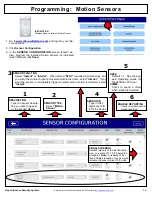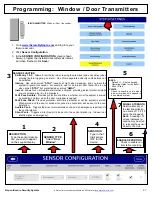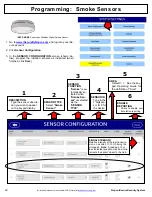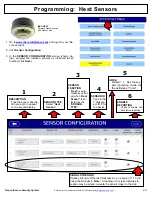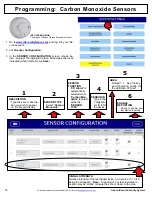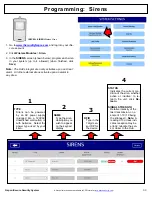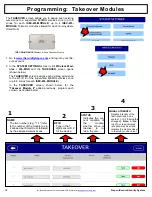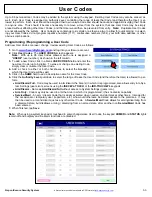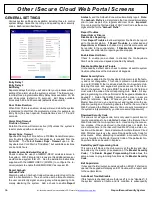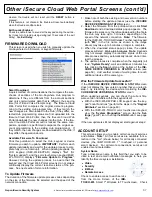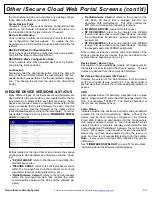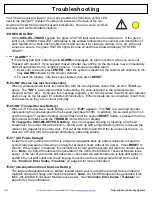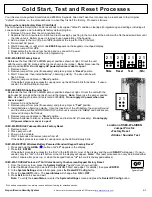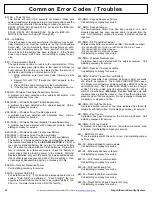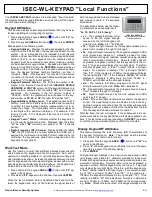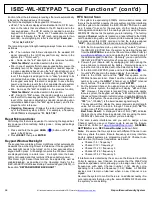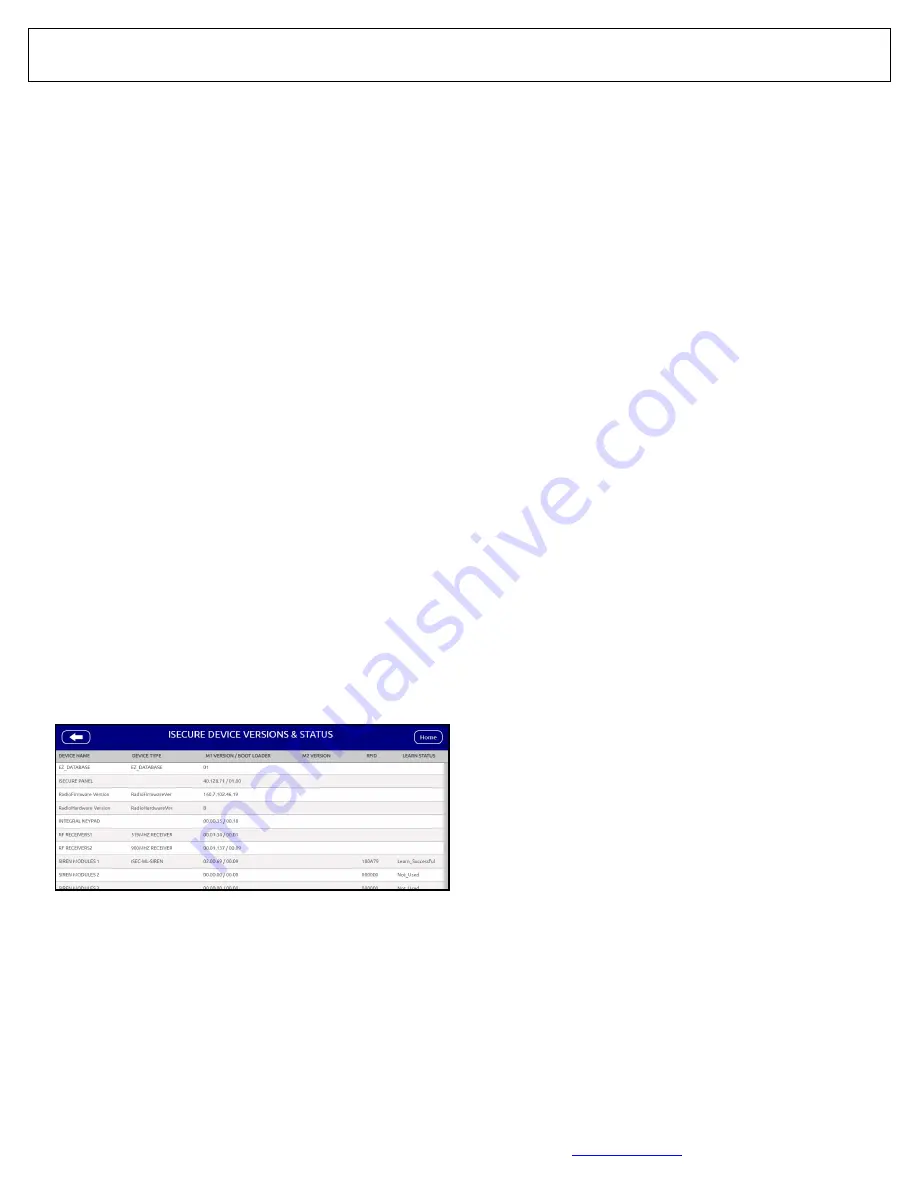
Napco iSecure Security System
All technical manuals are available in PDF format at
tech.napcosecurity.com
59
the Go
-
Anywhere Hub and overwrites any existing configu-
ration data in the iSecure Cloud Web Portal.
Create Restore Point
Creates a copy of the current iSecure Configuration data
already in the iSecure Cloud Web Portal and retains it in
the Cloud Web Portal for later retrieval, if needed.
Restore From Backup
Click to restore the iSecure Cloud Web Portal to the previ-
ous configuration that will appear. To update the Go
-
Anywhere Hub, a full download must be performed after the
restoral.
BACKUP Z
-
Wave Configuration Data
Click to back up all Z
-
Wave enrolled devices and program-
ming into the iSecure Cloud Web Portal.
RESTORE Z
-
Wave Configuration Data
Click to restore all Z
-
Wave enrolled devices and program-
ming into the Z
-
Wave device.
Last backup
Displayed under the appropriate button, this is the date and
time (in 24
-
hour military format) the last complete and suc-
cessful backup was performed for the associated configura-
tion. The backup is sent from the Hub to the Cloud Web
Portal.
ISECURE DEVICE VERSIONS & STATUS
Many different types of microprocessors and firmware are
used within the iSecure system, some located within the Go
-
Anywhere Hub, others within each iSecure device. Some
devices are required, some are optional; all are listed in this
screen to display their related firmware for each. Use this
screen to ensure that the firmware is the latest version
(click the
Scan
button to retrieve the latest data). To manu-
ally update firmware, see the section "
FIRMWARE DOWN-
LOAD
" on page 57.
Entries located at the top of this screen include the various
Go
-
Anywhere Hub hardware and firmware versions, includ-
ing:
•
"
EZ_DATABASE
" refers to the iSecure Cloud Web Por-
tal database version.
•
"
ISECURE PANEL
" refers to the microprocessor version
within the Go
-
Anywhere Hub that controls most of the
local alarm functions (arming/disarming, etc.).
•
"
RadioFirmware Version
" refers to the microprocessor
within the Go
-
Anywhere Hub that controls the radio
communications between the Hub and the wireless de-
vice(s).
Other iSecure Cloud Web Portal Screens (cont'd)
•
"
RadioHardware Version
" refers to the version of the
LTE Radio PC board
that is plugged into the Go
-
Anywhere Hub motherboard. This PCB controls the
LTE radio communication (reporting) functions.
•
INTEGRAL KEYPAD
(reserved for future use)
•
RF RECEIVERS1
refers to the integral Hub 319MHz
receiver firmware that controls those devices, including
the window/door transmitters, passive infrared motion
sensors, etc.
•
RF RECEIVERS2
refers to the integral Hub 900MHz
receiver firmware that controls those devices, including
the keypads and other 900MHz peripherals.
Other entries include the versions and current status of the
various optional iSecure devices that can be added to the
system (sirens, keypads, sensors, etc.).
Device Name / Device Type
Description of each upgradable module or firmware version
that exists or can exist within the iSecure system. The text
names are derived from the current Hub firmware.
M1 Version / Boot Loader / M2 Version
Displays the version of the Hub firmware for microproces-
sor #1 and (under its own column) #2. The Boot Loader is
the firmware that controls the remote download/upload pro-
cesses.
RFID
Each wireless device (for example, a keypad) has a unique
factory programmed ID code that distinguishes itself to the
Hub. For example, "155E57:F". The first six characters of
the ID code are displayed here.
Learn Status
Indicates whether the device was correctly and successfully
entered into the Hub programming.
Note:
Although the
device may be been correctly configured in the iSecure
Cloud Web Portal and downloaded into the Go
-
Anywhere
Hub without apparent errors, a "Learn Successful" status
always requires a complete two
-
way synchronization and
acknowledgement "handshake" between the Hub and the
device. For example, a device with a "Learn Unsuccessful"
status may not have been powered during the learn pro-
cess, and thus is not successfully learned into the system.
Note:
Every re
-
learn process also refreshes the version
information.
See "
FIRMWARE DOWNLOAD
" on page 57 for important
information about the firmware update process.

